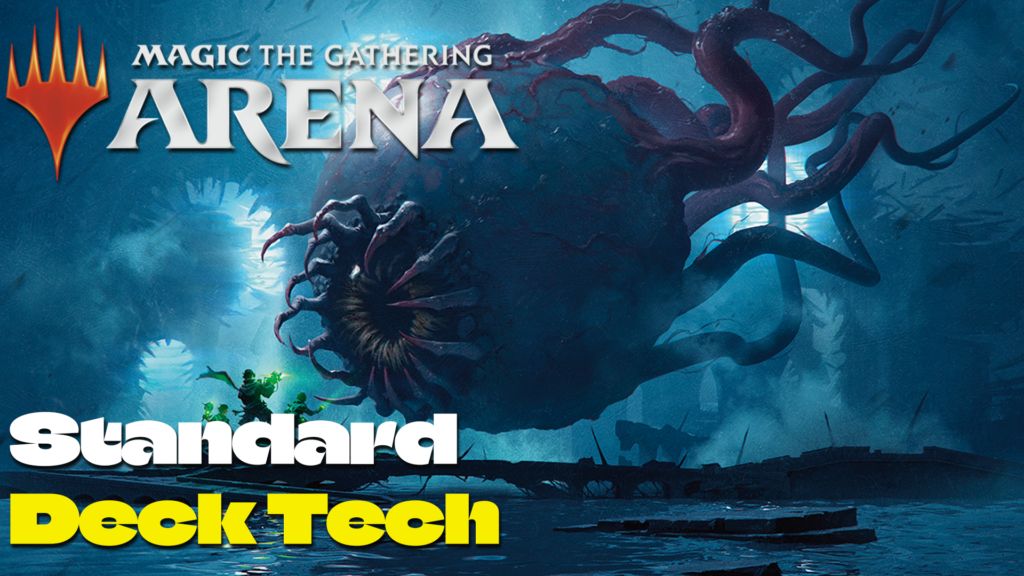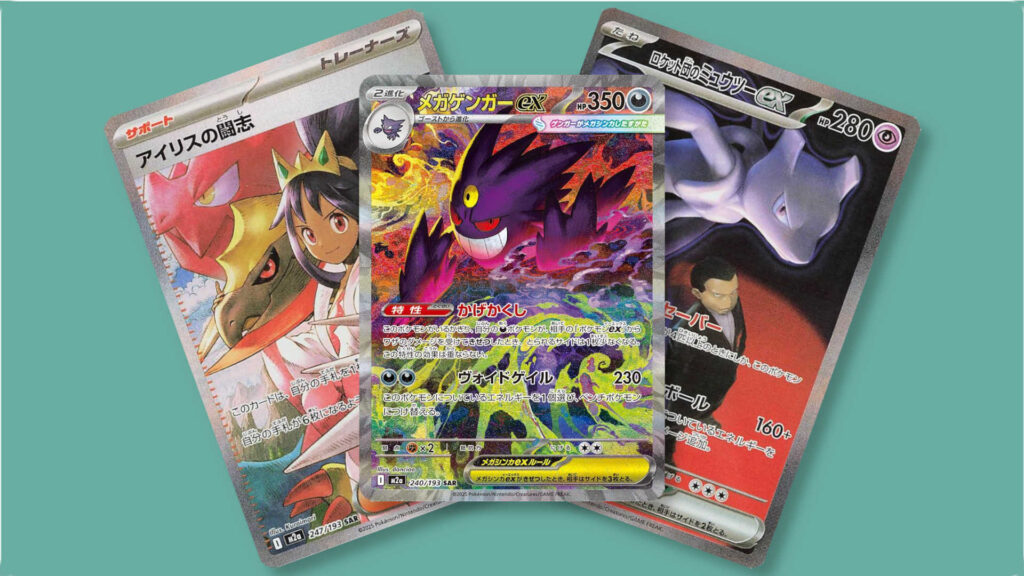If you weren’t aware, Magic‘s Standard format is currently an immensely fun and diverse metagame. It’s some of the best 60-card constructed you can be playing, and the barrier to entry with Magic Arena and even Magic Online is relatively easy to overcome. That said, there are so many options that it can be daunting to choose a deck to build. So today I want to concentrate on my current favorite deck in the format, Azorius Oculus (or Azorius Tempo.) It’s a powerful and synergistic choice for the Standard metagame with lots of engaging decision points in-game and meaningful ways to customize the deck.
Table of Contents
ToggleWhat’s the Game Plan for Azorius Oculus?

Azorius Oculus is all about getting a powerful threat into play early and protecting it until the opponent is dead. The deck can be relatively high variance at times. Some games you get a massive flyer on the board on turn two with countermagic backup and just coast to victory. Other games make you work a bit harder to get your win conditions into play. You have the tools to sculpt your hand, interact with your opponent, and swing for massive amounts of damage quickly.
The best way to talk about the cards in this deck is to separate them into groups, so let’s start with the most exciting group first.
The Threats for Azorius Oculus
Abhorrent Oculus – The best Eye in Magic, a multi-format all-star and a relatively new addition to the Azorius Tempo deck, which was previously playing Monastery Mentor in its place. This is easily my favorite card in the deck and absolutely the main reason to be playing it. It’s huge, it restocks your graveyard, it creates additional bodies, and it can even help cheat in your other threats if you manifest them. What’s not to love?
Haughty Djinn – A staple in blue tempo lists for a while now, but it feels great here. The more you fill the graveyard, the bigger he gets. It’s not uncommon for this guy to take an opponent to zero in just a couple of swings. The discount on instants and sorceries is also very relevant, as nearly every one of these cards in your main deck will only cost one mana if the Djinn is out, making protecting it a lot easier. I’ve seen some versions of the deck go down to three copies, but I wouldn’t go below four.
Kiora, the Rising Tide – The newest addition and really more of a threat, enabler, and card selection piece all rolled into one efficient package. She mitigates one of the easier ways to lose with this deck – having your hand gummed up with creatures you can’t get out fast enough – while often threatening to create a big ol’ Octopus by turn four or five. She won’t often win the game on her own, but the way she smooths out your draws, while presenting a creature your opponent will often need to respect, means she’s solid as a two-of in the main deck.
The Reanimation
I’ve maybe buried the lede a bit by talking about the threats first, but in my defense the Eye is really cool and I can’t be blamed for being excited about it. That said, Abhorrent Oculus and Haughty Djinn are a lot more exciting if you can get them out with mana to spare, perhaps even earlier than turn three. We aim to do this by getting them into the graveyard and reanimating them with one of these two spells.
Helping Hand – This is the most efficient way to get our big flyers into play and is in many ways just as much a centerpiece of the deck as the Eye itself. The most powerful starts for this deck involve getting an Eye or Djinn into the graveyard on turn one, then immediately reanimating it while leaving a mana open for interaction and/or protection. The biggest thing to note with this card is that the reanimated creature does come in tapped, meaning it can’t block. Reanimating Oculus does mitigate this a bit, since you at least get a manifested creature to chump block with on your opponent’s upkeep. This is another four-of in all versions of the deck.
Recommission – We don’t have any options for redundancy at one mana, so we need to look at our two-mana options. Of those, this is the only one that gives us a meaningful bonus with a +1/+1 counter (this format also has Call a Surprise Witness and Return Triumphant, but the flying counter and Young Hero Role token these respectively provide are very redundant with our huge flyers.) Most lists only play one or two copies of this card, as another way to lose with this deck is having your hand filled up with reanimation spells and no targets in the yard. Still, I do appreciate a bit more redundancy here, and the ability to get a blocker immediately is useful. The +1/+1 counter can also have fringe benefits beyond just making the big guys even bigger, like dodging certain damage-based removal.
The Graveyard Fillers
We can’t quickly and reliably get a threat to reanimate into our graveyard unless we actively work at it. Luckily, blue gives us plenty of options to fill the yard while sculpting our hand.
Picklock Prankster – I don’t think a lot of players fully appreciate how pushed some of these adventure-creature cards from Wilds of Eldraine actually are. You’re telling me we get an Impulse that fills the graveyard, hits most of the relevant cards in our deck anyway, and comes stapled to a cheap flying creature? This card does (almost) everything! One thing to note is that the Prankster itself can be surprisingly relevant in a number of matchups. You will sometimes need to cast it early as a blocker or bring it back with your reanimation to stem early bleeding. It also wears the +1/+1 counter from Recommission surprisingly well and can sometimes act as a backup win condition when our huge flyers don’t quite close the distance. Another easy four-of.
Moment of Truth – The one major advantage this has over Picklock Prankster is that it can grab any card type. We’re usually okay dumping any creatures we see into the graveyard, so the most common other target is lands. This deck does want to make land drops fairly consistently, so you’ll sometimes need to fire this off before Free the Fae to ensure you don’t fall behind. This is another one of those cards that some people cut to three copies, but I like the full playset myself.
Chart a Course – Like I said with Kiora before, sometimes we just need to discard a big creature so we can reanimate it. Chart a Course is effective at getting cards out of the hand that we don’t want there, though we can also cast it for full value relatively easily in this deck. I’ve seen some decks go up to a full playset, but since this isn’t an instant I prefer it at two copies.
Founding the Third Path – This card has become more and more popular in this deck archetype, and it’s not hard to see why. It’s even more effective at filling the yard than the Prankster and slowly but surely provides us with additional card advantage. I do understand some players’ hesitance with this card since it isn’t an instant or sorcery itself, and is kind of slow. I’m not actually playing any copies of this card right now, but I respect the decision and think if you’re going to play it you should go with a full playset.
Meticulous Archive – I’m saving most of the mana base until later, but I did want to take a moment here to talk about the best land in the deck. The fact that our mana base can put cards from the deck into the graveyard is just phenomenal and enables some of our most busted draws. While I wouldn’t expect to surveil an Oculus turn one every game or anything like that, I do believe that the majority of the time, unless you really need to draw the top card of your deck next turn, it’s optimal to just throw it into the yard.
Opt – I’m cheating a little bit lumping this in with the others, but it does mainly exist in the deck to offer some selection while getting a cheap instant into the graveyard. Thank goodness it was included in the Foundations Beginner Box so we don’t need to play Sleight of Hand anymore, as being an instant is so helpful. That said, I’ll be patiently awaiting a Consider reprint. Until then, a playset of these works.
The “Removal”
Okay, this mostly isn’t removal in the traditional sense, but if all’s going according to plan you don’t need to permanently remove lots of threats. Just slowing your opponent down can buy your flyers enough time to swing for lethal. Most decks won’t run all four of these cards, but they all have their merit, so I’m bringing them all up now.
Into the Flood Maw/Unsummon – A simple bounce spell can be deceptively good at buying you a couple of turns. This is often the cheapest on-board interaction you can run, and if you’re not familiar with the format you might be surprised how many things either do something horrible to you when they die or just don’t stay dead to begin with. Most Azorius Oculus decks will choose one of these or the other and run between 2-4 copies, depending on what the rest of their removal suite looks like. Into the Flood Maw can bounce any nonland permanent your opponent controls for the low price of a tapped Fish token, while Unsummon can be used to rescue one of your own creatures in a pinch. The choice mostly comes down to preference and can change depending on what’s popular in the metagame at any given moment.
Soul Partition – It took me too long to fully appreciate this card. Like the bounce spells, it can play a lot better than it looks. You can often keep an important threat off the board long enough with this that it might never be recast, and this also has the alternate mode of exiling your own creature so you can recast it. I’m on a singleton copy, myself.
Get Lost – One of white’s best removal spells, but not one I’m particularly excited to cast in this deck right now. Into the Flood Maw and Soul Partition can hit the same targets without supplying your opponents with Map tokens. This is a bigger deal in some matchups than others. In general, decks with smaller creatures can take better advantage of the Maps. Also notably, this is the only removal spell we’ve talked about here that actually destroys the creature. While it’s nice to know that the permanent in question is gone for good, that actually isn’t true for threats like Unstoppable Slasher and the Enduring creatures (Enduring Innocence, Enduring Curiosity, etc). It can also be risky against Heartfire Hero and Cacophony Scamp, which might still kill you anyway. I’m not currently playing this card, but it’s certainly a defensible choice, particularly if you’re running Unsummon over Into the Flood Maw.
The Countermagic
Phantom Interference – Some of you might be surprised that an Azorius deck with countermagic isn’t interested in No More Lies, but there’s actually a great reason for that: you want countermagic that’s affected by the cost reduction ability of Haughty Djinn. This makes protecting the Djinn a lot easier, and on rare occasions you’ll find yourself making the 2/2 Spirit token as well. Early game this works about as well as No More Lies anyway. You likely want a full playset.
Negate – This isn’t in the main board of every version of the deck, but it’s a tried and true option for tempo decks. In general this deck gets to play around with random one-of inclusions like this just to protect its creatures a little better (I’ve also played with Shore Up and Surge of Salvation.)
Three Steps Ahead – Some players have begun cutting this card, but I can’t bear to do that; it just does so much! It’s usually a Cancel/Counterspell depending on whether the Djinn is out, but you can sometimes use it to dig deeper into the deck, and making a token copy of a big flying creature can completely close a game out of nowhere if you time it right! You can even do it all at once! Nothing beats simultaneously countering your opponent’s removal spell while creating a second Haughty Djinn. As much as I’d love to run more, two is enough given how relatively costly it is.
The Mana Base
Aside from what was already said about Meticulous Archive, there’s not a ton to be said about the individual lands that make up the mana base. The nonbasics make your mana very consistent. Some decks don’t run the one-of Plains as blue mana is by far the most important, but I like having it on the off-chance I need to fetch it from a Demolition Field activation.
One thing that should be mentioned is that you don’t have room for pretty much any utility lands yourself. This deck’s spells tend to be very color-intensive, so colorless lands are a big ask. I’ve played with Restless Anchorage before, but the games where activations actually helped win were outweighed by the games where the tapped land hurt me. This deck can play a long game, but it doesn’t really want to rely on its lands to do so.
The Sideboard
There are plenty of sideboard options other that what’s listed here, but these should give you a rough idea of what you would want to include in yours.
Negate – Good in control matchups and against removal-heavy decks.
Exorcise/Sheltered by Ghosts – Removes a lot of problematic permanents and condenses a bunch of sideboard slots into one.
Temporary Lockdown/Split Up – Cheap sweepers really help against the super low-to-the-ground decks, especially the Convoke decks.
Elspeth’s Smite – Efficient exile-based removal for matchups involving Heartfire Hero, Unstoppable Slasher, or certain Enduring creatures.
Monastery Mentor – Not popular in the main deck these days but it fulfills an important function in the sideboard. Our deck can have a lot of trouble with certain graveyard hate cards. Abhorrent Oculus often can’t hit the field at all and Haughty Djinn won’t have the power to actually hurt anything. Mentor lets us present a threat that still works in the face of graveyard hate.
Ghost Vacuum – Good in the mirror and versus other graveyard-based decks since it doesn’t hurt our own graveyard.
Tips and Tricks for Azorius Oculus
Now, with all of the cards looked at, let’s review a few general tips and tricks before we wrap this up!
- You want opening hands with a variety of effects. If your hand is gummed up with creatures or reanimation spells, you might need to mulligan. You can use your card selection spells to smooth out your draws, but keep in mind what it is you need to dig for. Opt and Moment of Truth could be those additional lands you need, but if the game is going to turn completely dire if you miss, you might need to take the mulligan.
- You also often want an opening hand with some sort of interaction, especially against a random opponent. Standard has a lot of fast and powerful decks, so you can’t just let them do whatever they want.
- It’s often worth holding back on your threats for a turn if it means being able to protect them from removal. You’ll need to determine how likely it is that your opponent has a removal spell depending on what they’re playing.
- Leveraging your removal and counterspells is key. You don’t need to value mana efficiency above all else. If you can invalidate a threat later with your own threats, you might want to save that bounce spell for something more important.
- If you have the option to get either Abhorrent Oculus or Haughty Djinn on board, it probably depends on whether Djinn would be easier to protect. You will have some lines where your mana lets you hold up counterspells with the Djinn but not the Eye. On the other hand, if you can’t do that, Eye is more likely to get immediate value if you can’t protect it.
- There’s also some tension when casting the Eye affects the number of instants and sorceries in your graveyard for Haughty Djinn. You don’t want to completely neuter the Djinn, but in general once your wheels are turning it’s probably okay to reduce its power by a little bit to get the Oculus out.
Abhorrent Oculus is such a fun card to play with, and I think this is the best way to play the card in Standard right now. Until next time, I hope you all experience the joy of swinging for double-digit numbers in the air on turn four!
Wanna learn how to play on Arena? Then check out our complete beginner’s guide here.




